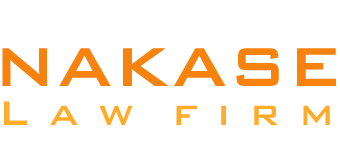Who Offers Nonprofit Business Loans?
As mentioned previously, unfortunately, it can be difficult for nonprofit organization owners to secure business loans. This is because few lenders offer this type of loan. Lenders may believe that lending money to nonprofits is riskier than lending to traditional businesses.
In general, when reviewing a nonprofit organization’s loan application, a lender will study the following elements:
- The company’s annual revenues
- Fundraising plans and costs
- General financial data
A lot of nonprofit organizations rely on government agency grants and big donations. However, these sources of revenue tend not to last very long, since donors often change their priorities. This factor increases liability for lenders, which can result in a nonprofit suffering higher interest rates or rejected loan applications.
Also, many nonprofits cannot simply increase sales as a traditional business might. Indeed, if a nonprofit increased its services, this might result in higher costs while not increasing revenue. Generally, the only method by which nonprofits can increase their revenue is through capital campaigns or by applying for funding through the government. This makes up another reason why lenders are hesitant to provide loans to nonprofits, or at least to charge steep interest rates.
How Can a Nonprofit Organization Apply for a Nonprofit Loan?
The nonprofit loan application process will vary depending on the specific vendor. In general, the owner of a nonprofit organization will need to provide accurate and specific financial information that lists revenues, assets, and spending. Because of this, an owner should put together these documents prior to applying for nonprofit financing.
The Small Business Administration (SBA) provides loans as well as other resources to assist small businesses and nonprofits in the United States. Specifically, it can help them identify potential lenders. It is important to seek lenders with experience related to nonprofits or the support of economic development. These individuals or firms may be more likely to accept a nonprofit application and will better understand the needs of one’s organization.
It is also possible to seek funding from Community Development Financial Institutions. These groups attend to businesses that affect low-income areas, which often includes nonprofits. It is quite possible that a SDFI will want to invest in a nonprofit’s cause.
What Are the Potential Liabilities Associated with Nonprofit Loans?
A nonprofit organization will be held liable for any loan that it taken out in its name. This means that an organization’s owner will need to submit collateral, and this asset may be repossessed if the owner fails to repay the loan. Should this happen, the business’ operations would face disruption, putting the nonprofit’s future at risk.
Repayment plans can cause financial difficulties by cutting into cash flow. This, in turn, can create problems regarding liquidity. For this reason, it is important to only take out loans that are essential.
Furthermore, a nonprofit owner should examine the impact that repayment will have on the business’ finances. It is better to take out a short-term loan, rather than a long-term one, if the owner is concerned about repaying. With a short-term loan, it is easier to pay back quickly before donor shifts or market changes.
Prior to applying for a term loan, it is crucial to read all the details of the agreement. An owner should fully understand the interest rates, repayment terms, and fees. One should remember that longer repayment terms have lower monthly payments. However, these plans often end up costing more in the long run due to interest.
What Other Financing Options Are Available for Nonprofits?
It can certainly be frustrating for a business not to be approved for a loan, especially when it is a nonprofit doing good work for the community. However, there are other ways for a company to receive secure funding. For instance, a nonprofit can apply for a business credit card or line of credit, both of which provide access to working capital.
































